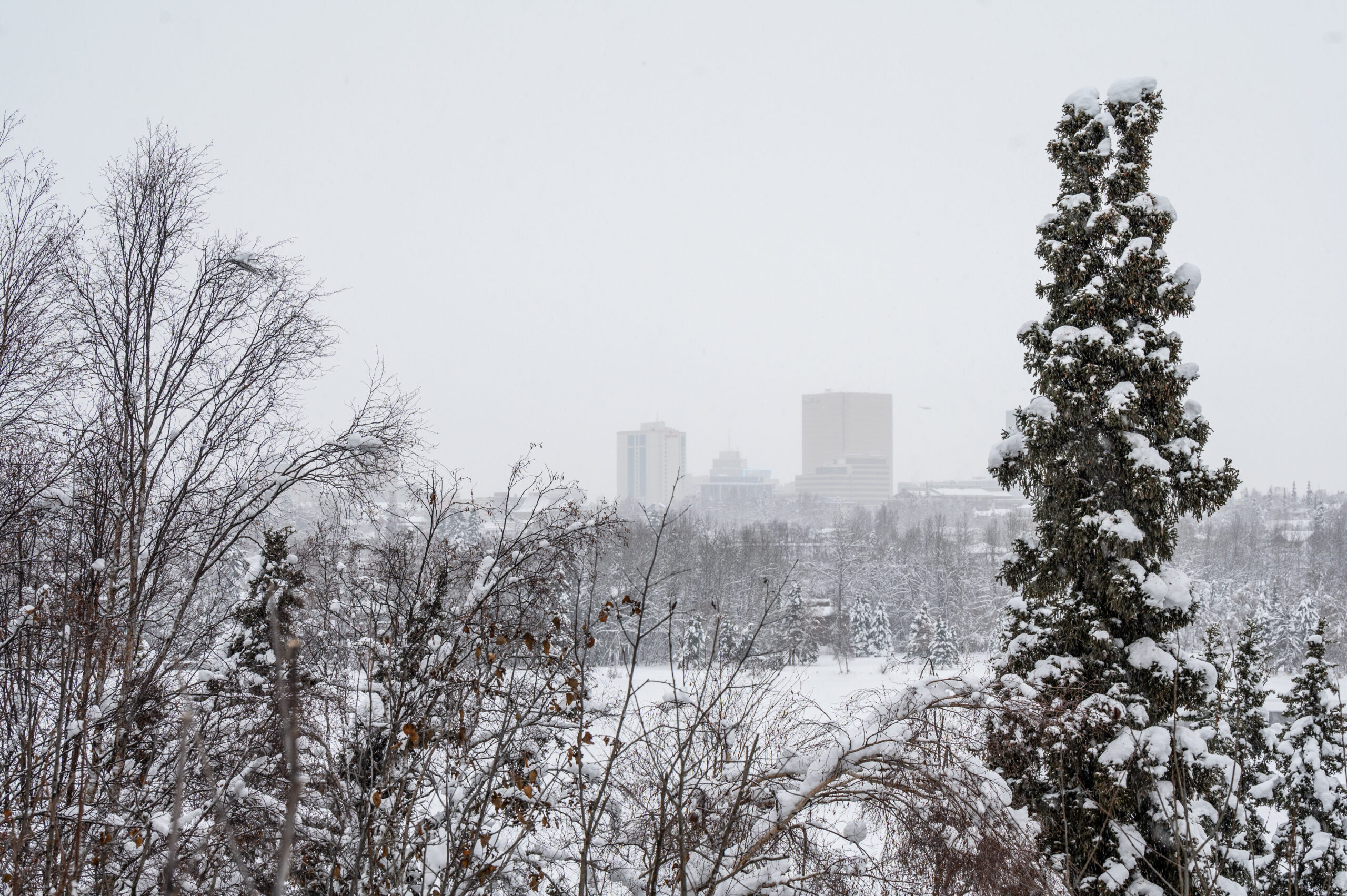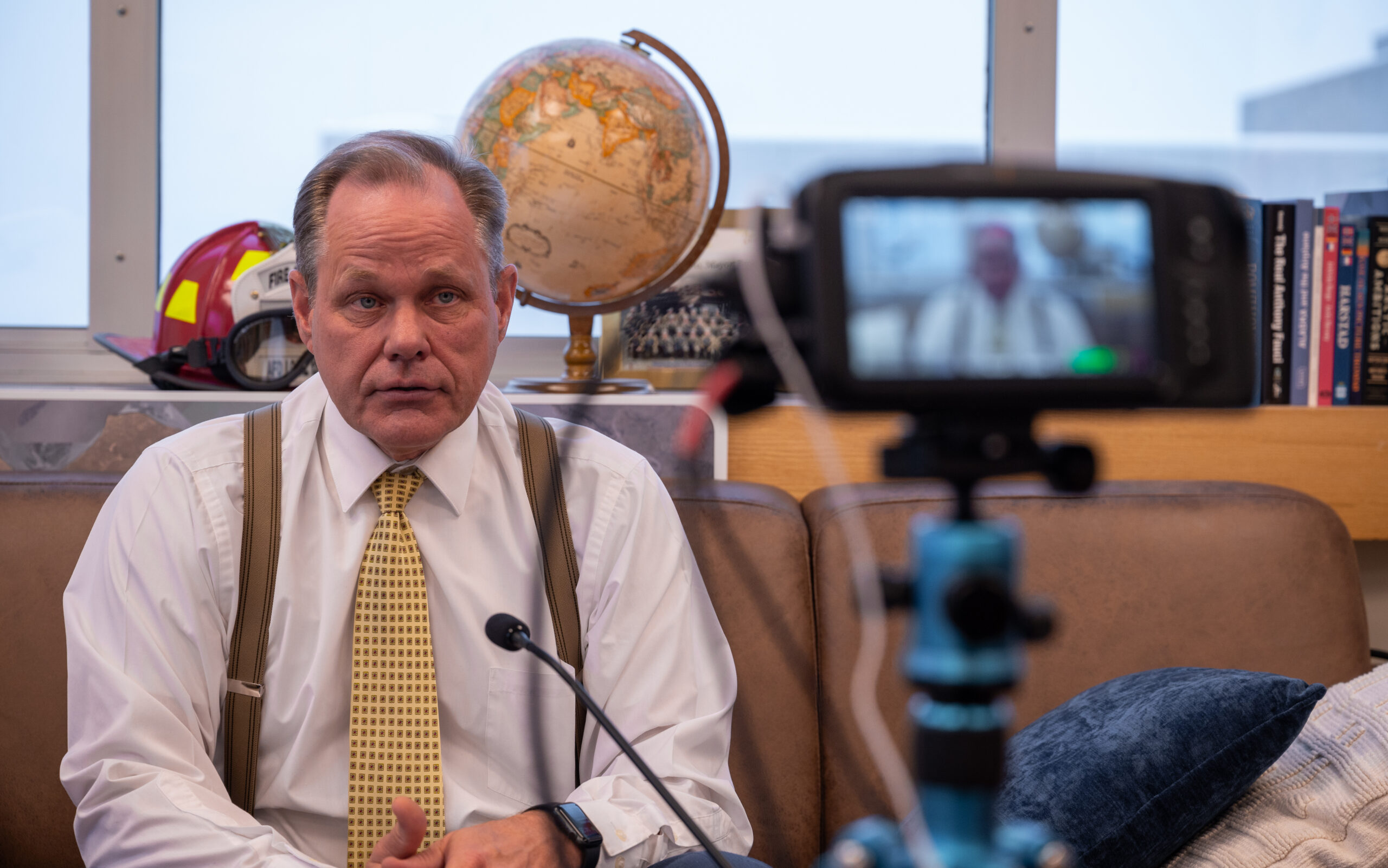
Four years ago, Anchorage residents gathered in Assembly chambers to voice support for climate action.
“I know that climate change is real and I want to do something about it for future generations,” 15-year-old Emily MacRae, then a sophomore at A.J. Dimond High School, said at the podium. “I want to express my full support of this climate action plan. And I urge all Assembly members to implement this plan.”
That evening, back in May of 2019, the Assembly adopted the city’s first climate action plan. The 108-page document identified potential climate threats and set a goal for Anchorage to reduce carbon emissions by 80% by 2050.
Today, Anchorage is under Mayor Dave Bronson’s leadership, and the city has failed to issue an annual report on the goals outlined in the plan. The plan is also buried in the city’s website, which doesn’t list an obvious link for it. Someone looking for the plan would have to Google it or already have a direct link.
So what happened?
Veronica Hoxie, a Bronson spokesperson, initially said in an email she wasn’t aware of the plan. Later in a text she said the plan is still city policy.
But advocates say it’s not clear what the Bronson administration is doing on climate change.
“Either they’re doing a really bad job of communicating what they are doing, or they’re not doing anything. And both of those are pretty bad answers,” said Jenny-Marie Stryker, political director at The Alaska Center, a nonprofit that advocates for climate action and renewable energy.

The plan’s emissions reduction goal was ambitious for the city, but it actually didn’t go far enough to meet U.S. climate targets under the 2015 Paris Agreement. Scientists say the world needs to reach net zero emissions by 2050 to keep warming below 1.5˚C (2.7˚F) and avoid the worst effects of climate change.
“Climate action plans have become pretty standard community planning tools,” said Shaina Kilcoyne, one of the lead authors of that first 2019 plan. “It’s simply a roadmap for reducing your impact on the climate and for adapting for the changes that you are seeing in your community.”
The plan identified ways for the city to cut greenhouse gas emissions, for example, by improving the energy efficiency of city buildings, phasing in electric vehicles and expanding recycling options. Kilcoyne said many of the solutions would also save the city money, in part by cutting energy costs.
Under former Mayor Ethan Berkowitz, the city got started on some of the proposals. It piloted electric trash trucks and buses, and swapped out thousands of streetlights for more efficient LED bulbs.
The initial implementation was modest, but it was a start, Kilcoyne said.
“And we were extremely encouraged by getting started,” she said.
The plan also identified some key climate risks Anchorage needs to prepare for. Those include an increased risk of urban wildfires as climate change brings warmer, drier summers. Meanwhile, warm winters come with extreme precipitation and icier conditions.
The plan noted the city will need to invest more in road maintenance and operations, including ice scrapers, sand and gravel, to keep transportation safe during unpredictable winters. It recommended developing an “urban forest management plan” to reduce wildfire risk.
The plan didn’t make recommendations to deal with the issue Anchorage has faced this winter, with above-average snowfall.
While the plan was coming together, it was clear that climate change is a big concern for many Anchorage residents, Kilcoyne said.
“We worked with about a hundred community members on the whole plan. And then we had hundreds of community members provide input throughout,” she said. “It really was a community-driven plan.”
The plan and its carbon emissions goals aren’t legally binding, but the city committed to produce annual progress reports and a comprehensive update every five years.
Kilcoyne helped put together annual reports on the city’s progress until she left her job in 2022, a year into Mayor Bronson’s administration.
But the city missed its 2023 report and a link to the plan has been removed from the city website.
Many other Alaska communities are putting together their own climate plans to address major threats like permafrost thaw, flooding and erosion. These plans are often a requirement to qualify for federal climate mitigation grants. Juneau and Sitka each have one, though Fairbanks rejected a proposal in June.
Anchorage should be leading the way, said Stryker, with the Alaska Center
“[For] one of the biggest cities, with the biggest source of funding, with the biggest city staff to turn a blind eye to reality and to ignore the plans we’ve made, I certainly don’t think it sets a good example,” Stryker said.
One city department does still seem to be following the 2019 climate plan. Solid Waste Services keeps a summary on its website, and recycling coordinator Kelli Toth said it informs many of her department’s priorities, including expanding composting to reduce greenhouse gasses from food waste and capturing emissions from the landfill.
“When making program decisions and that kind of thing [we’re] still definitely following everything that’s in that climate action plan,” Toth said.
Kilcoyne said she hopes more departments are still taking action, even if the city missed its progress report this year.
The plan is due for a five-year update in 2024.
Kavitha George worked at Alaska Public Media from 2021 to 2024. Her coverage areas included statewide politics and climate change.





